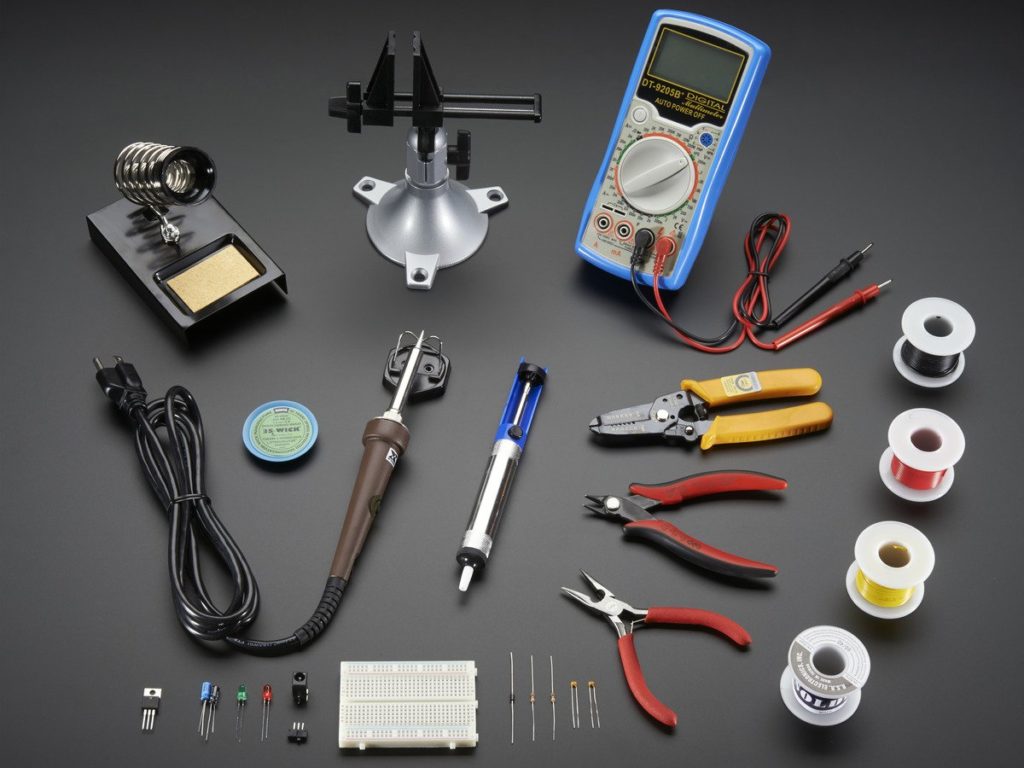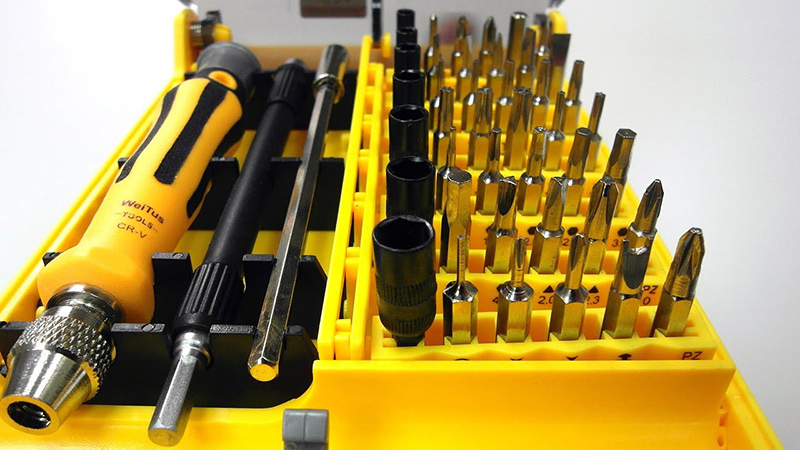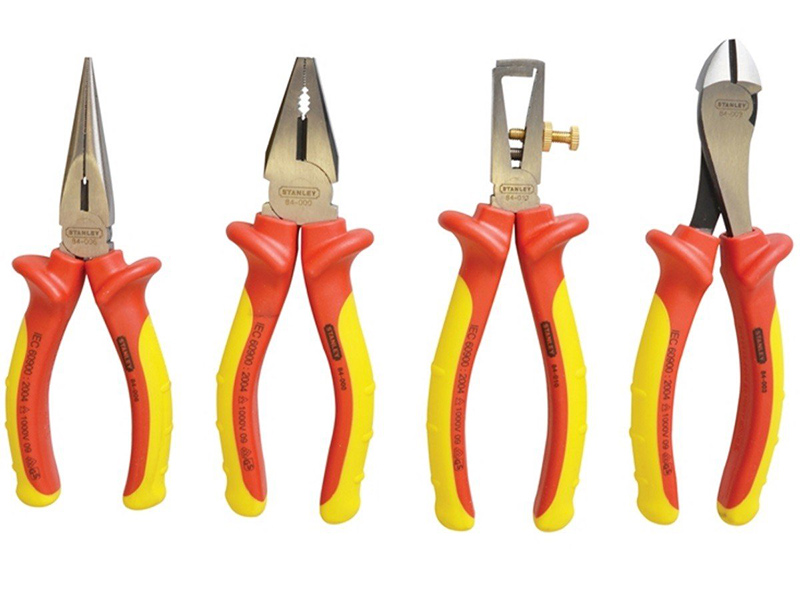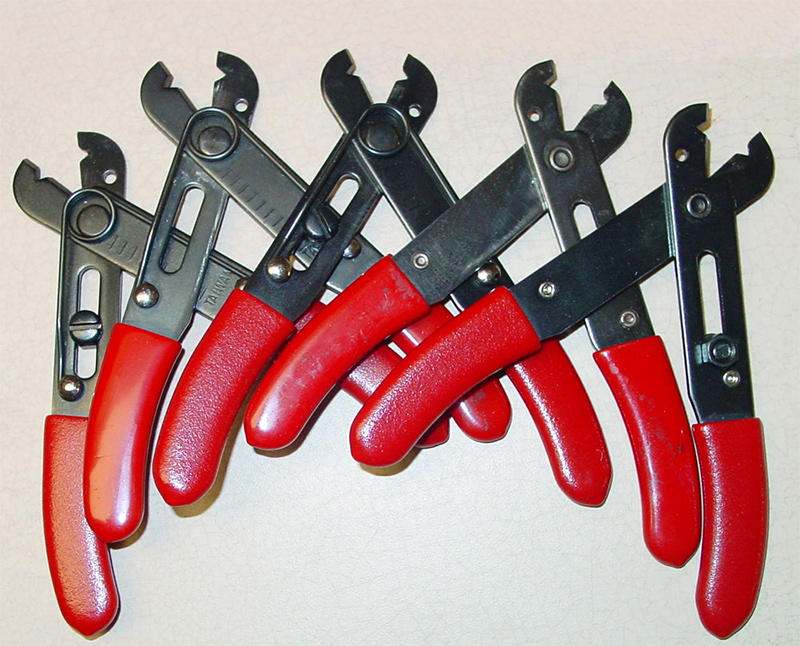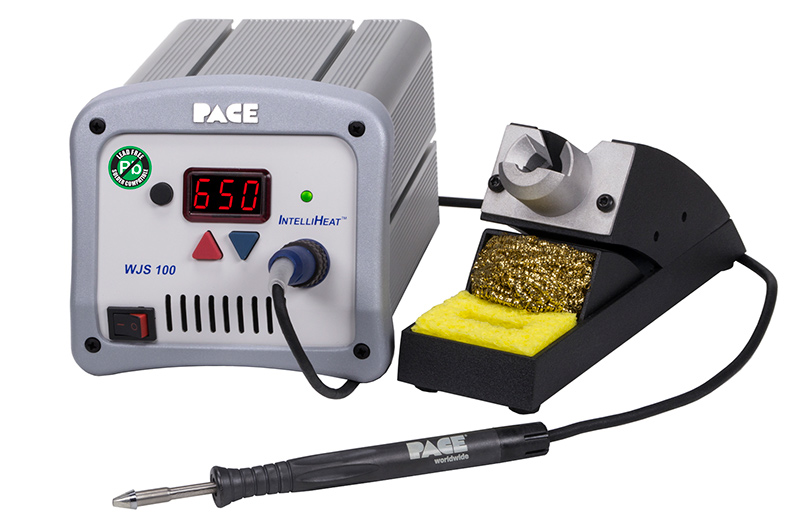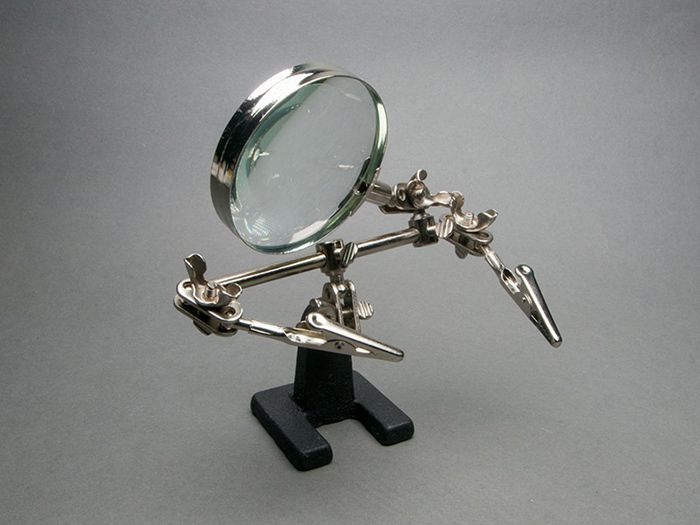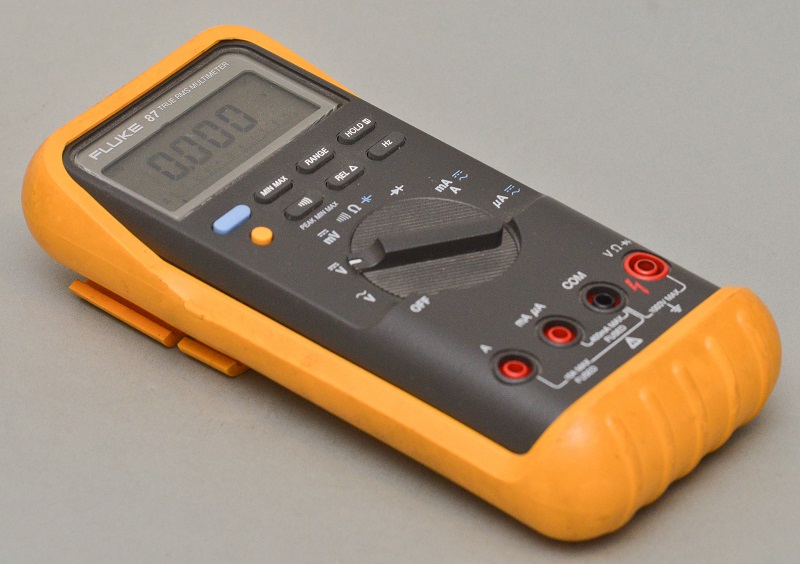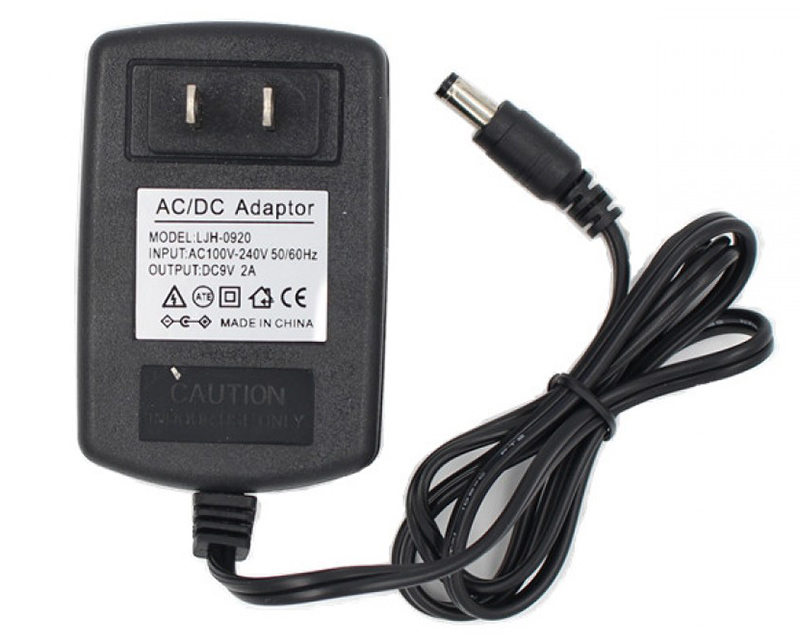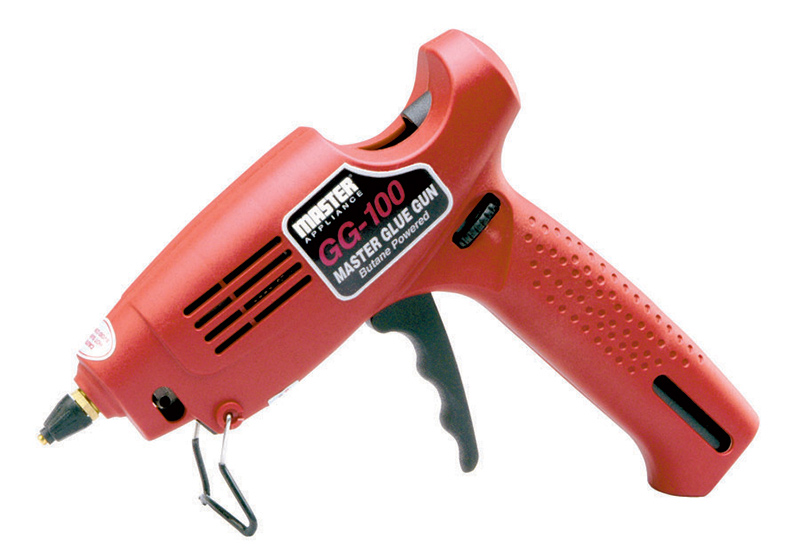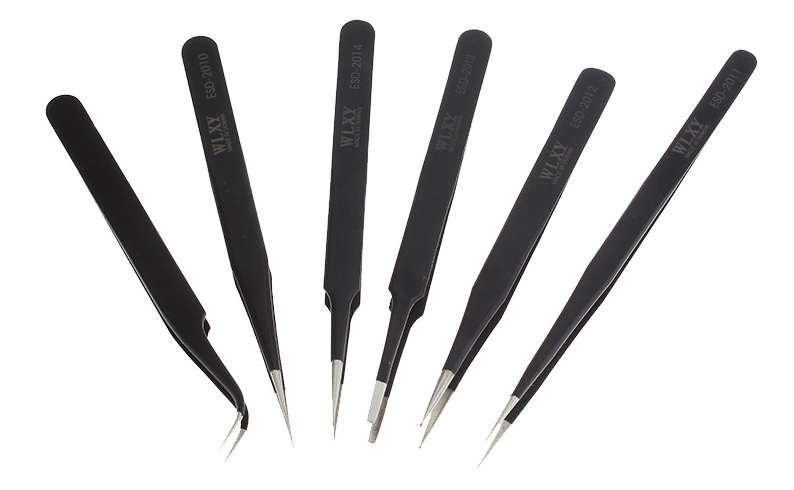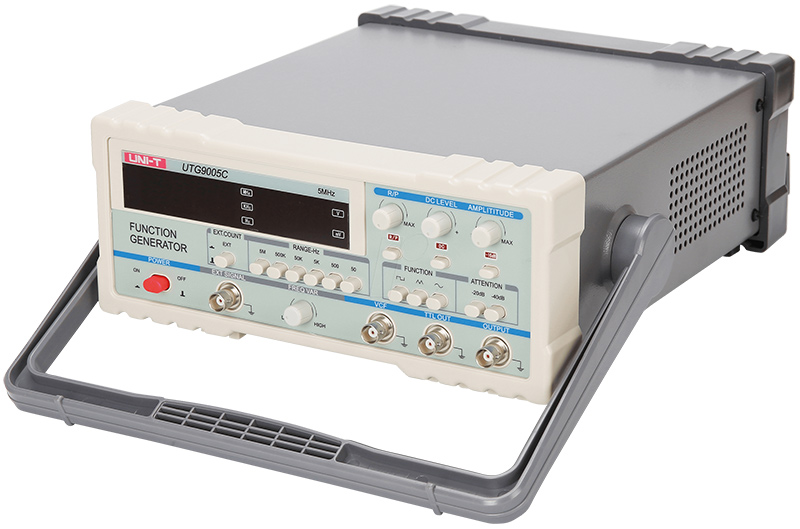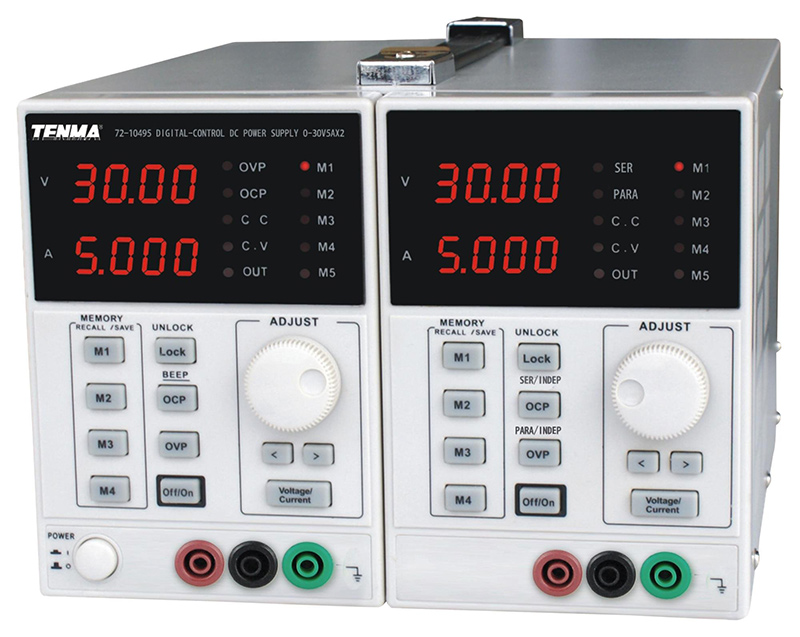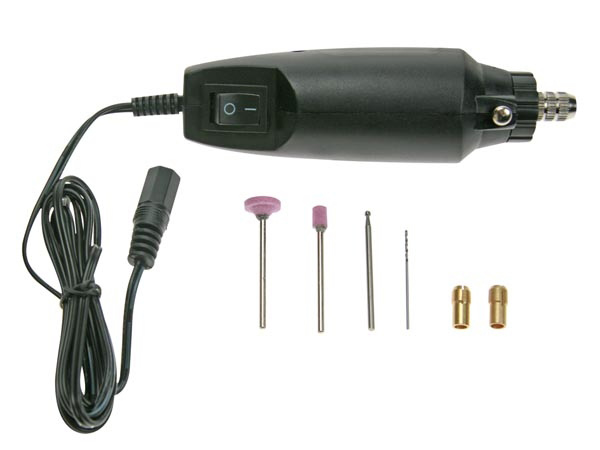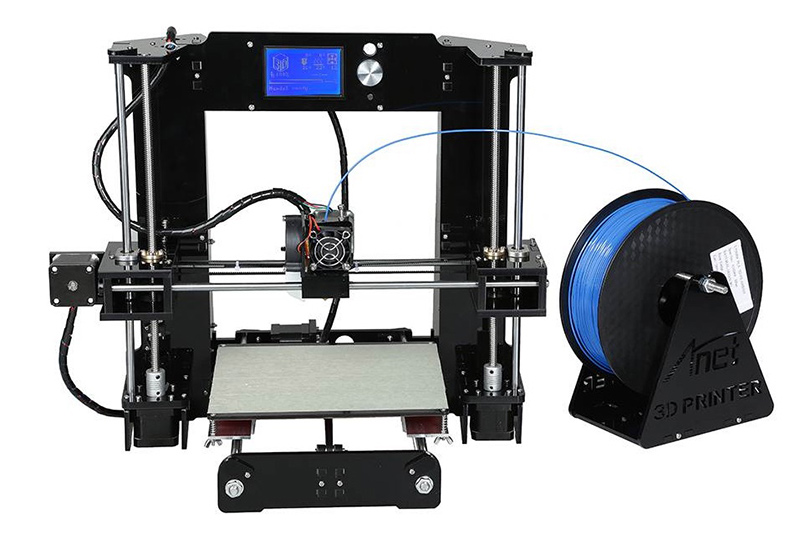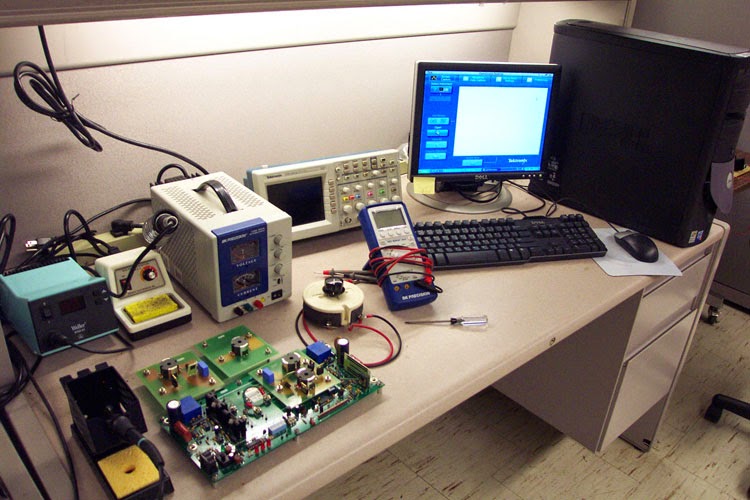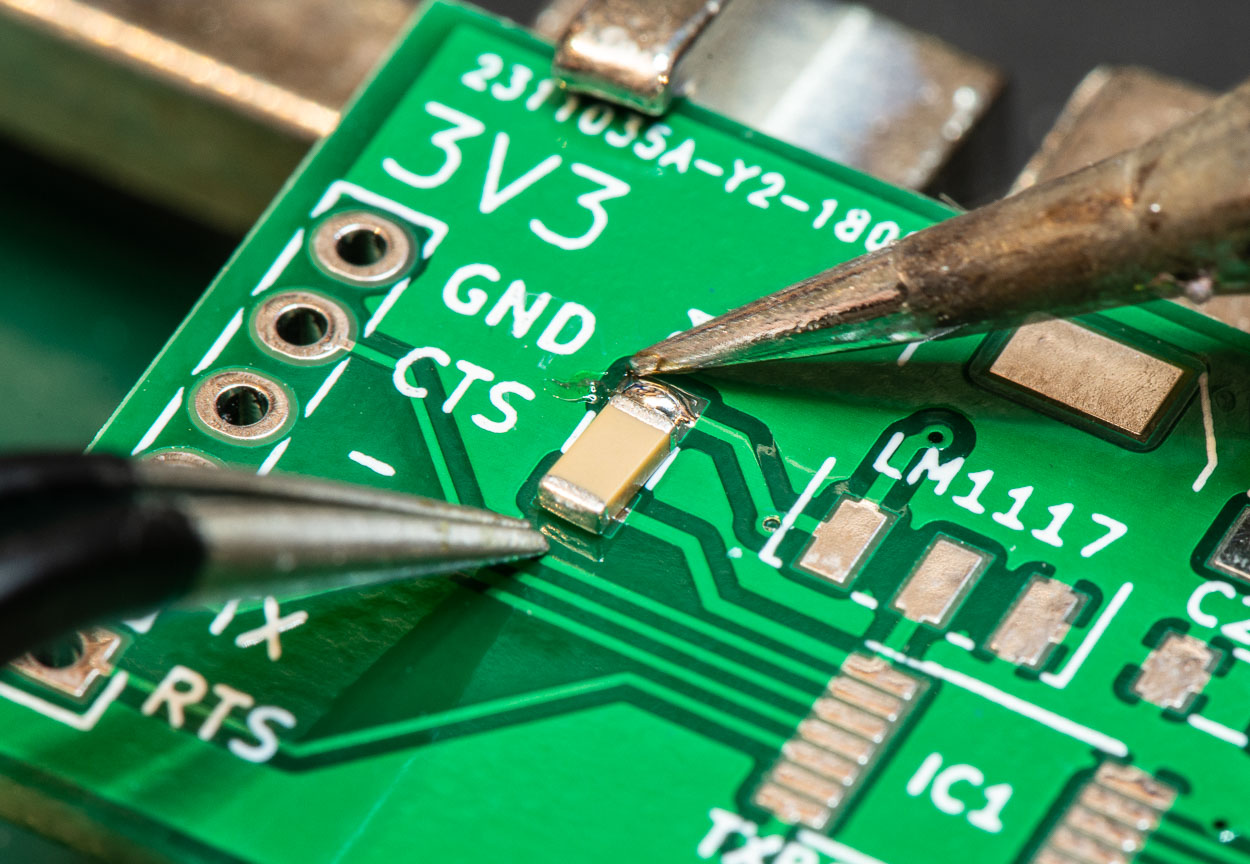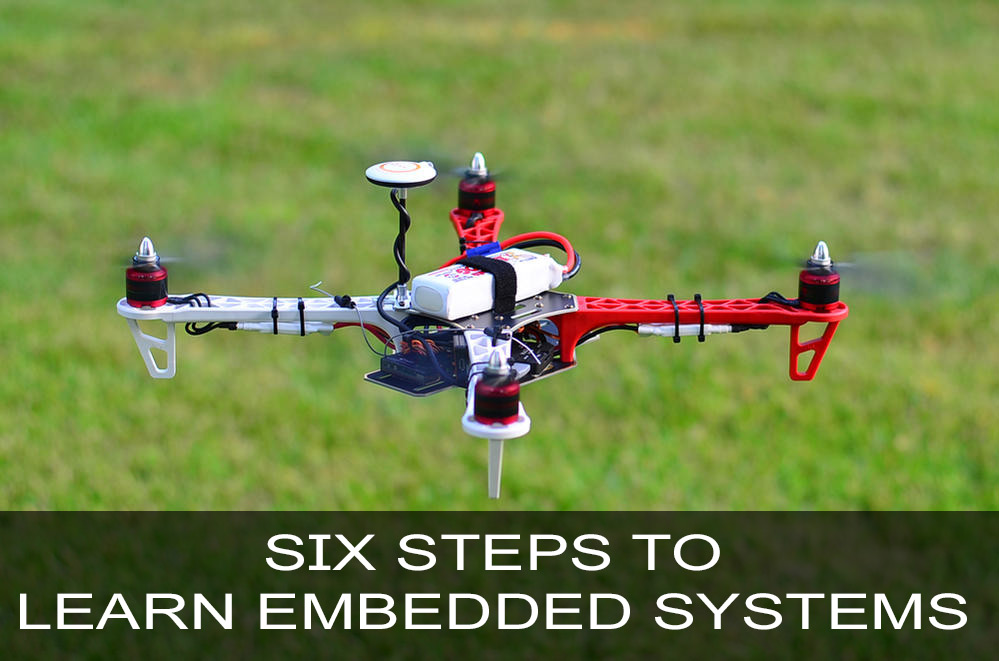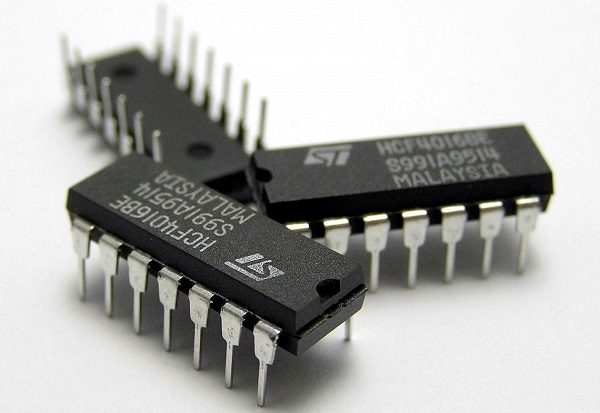Spacious, clean, well lit and fully equipped Electronics workbench is probably every Electronics engineer or hobbyists would dream of. Many beginners will get stuck with the question of what Electronic tools and equipment should they buy for setting up their workbench. This can be difficult because there are loads of tools and equipment available and some can be really expensive. So keeping the budget in mind and setting up a useful workstation will be bit challenging. This article focuses on helping Engineers and hobbyists with the selective lists of Tools and equipment they should have in their Electronic workbench. The toolkit listed below has been classified in to three different groups depending on the work level of Engineers or hobbyists.
- Basic
- Intermediate
- Advanced
This lists start off with Basic tools first and then moves to Intermediate and Advanced working levels. These Electronics toolkit in this list are compiled after asking opinion from Hobbyists and makers through different forums and Social media platforms. Also you will find links through which you can buy corresponding tools and equipments directly. We will obtain a small commission whenever you buy a product through these links, so in a way you are contributing to our website. This will help us bring more and better learning resources to you.
BASIC:
These are the Electronic tools and equipment you should have in your workstation if you are a beginner in Electronics and when your work involves Soldering, prototyping boards, Fixing Electronic devices, Making projects etc.
1. SCREW DRIVER SET:
There is a reason I have added this at the beginning and this tool don’t need much introduction. Screw drivers will be commonly available on all household but its important to have a dedicated Screw drivers just for your workbench so that you don’t have to fiddle around your house when you need one. Also you will need this tool more frequently. But when it comes working with Electronics you are gonna need variety of Screw drivers because different equipment comes with different screws in it and using the same screw driver on all those screws is just not possible. Slotted, Torx, Philips, hexagon and Frearson screw heads are most commonly used in Electronic equipment. So it’s strongly advised to have these screwdrivers ready in your workbench.
Another wise option you could choose is “Screw driver tool kit” which is quite famous in market today. There you will have one screw driver handle and many interchangeable Screw driver bits that you can choose and fit to the handle. I find these Screw driver sets extremely convenient and have expanded functionality than the standard Screw drivers with fixed screw heads. But the key here is to choose and get the ones with good quality since cheap one tend to break after considerable amount of torque is applied on it.
Buy the 45 in 1 Professional Screw Driver Tool kit
2. PLIERS AND STRIPPERS:
Pliers are another pretty common hand tool like the screw drivers. However in order to work with Electronics specific set of Pliers are very much necessary. Again when comes to pliers you will have plenty of options to choose from. Out of all
- Nose pliers – Used to hold wires, bend, re-position component legs.
- Side cutting pliers – Cutting wires and component legs.
- Lineman’s pliers – Used in gripping, bending, cutting wires ( mostly used with high gauge wires )
will be very much used in your Electronic workbench. I would advice you to get a set that comes with different type of pliers in a single package.
Wire Strippers are used to strip wires to expose the conductor part of it. This is pretty essential tool to have in your electronic workbench.
3. SOLDERING IRON / SOLDERING STATION:
This must have been the so obvious tool in this list. Be it Prototyping, Fixing equipment or experimenting a quality Soldering iron and other soldering accessories like Lead, Flux, Desolder pump or wick should always be in your workbench. Soldering Iron is nothing more than a electrical tool that is used to join work pieces using solder element by applying high temperature. Now a days many Soldering iron comes with interchangeable tip that suits for all kinds of Soldering jobs. So I would suggest you to choose a Soldering iron those can be interchanged whenever the situation requires. Also do not compromise on the quality soldering iron since low quality soldering irons tend to stop working due to the effect of oxidation. Learn how to properly maintain a Soldering iron here.
Soldering station, this is a variant of traditional soldering iron and gives extensive control over the temperature to work and will suit wide range of soldering jobs. In Electronics certain components can withstand only certain level of heat. Anything above that will likely damage that component. With Soldering station you have the flexibility to choose the temperature you need and do complex solder jobs perfectly. Besides Soldering station comes with a neat setup that’s needed to Solder and maintain the equipment solder free. So my advice is to go for quality soldering station if you got some extra bucks, if not stick to quality soldering iron and try your hands on station when need arises. And do not forget to get other Soldering essentials like Lead, flux, stand, Cleaning sponge, Desolder pump etc.
Buy Bakon Soldering station or Buy Soldering Iron and kit
4. THIRD HAND / HELPING HANDS:
This is a simple tool that assist us while Soldering boards and PCBs. This tool is commonly referred to as Helping hand or Third hand. This tool usually comes in different designs and sizes. The purpose of this tool is to hold the PCB’s steady while soldering to prevent shaking. Also few third hands comes with magnifying glass to help us view the soldering point better. While getting one make sure it is sturdy and good quality as cheap ones tend to shake while soldering which ultimately kill the purpose of getting a helping hand in the first place.
Buy Helping hands with magnifier
5. MULTIMETER:
There can be no Electronic workbench without basic testing equipment. And that basic test equipment is Multimeter, as name suggest these are extremely handy and versatile testing equipment that’s used to measure different parameters such as Voltage, Current, Resistance and continuity. In addition modern multimeters do measure Capacitance, Frequency, Inductance and test components like Diodes, transistors, batteries and etc. You can purchase either traditional one or modern one depends upon the parameters you may want to measure. As a beginner a good quality basic Multimeter will do good. Getting a good quality one is specifically important since it shows less deviation from actual readings than cheap multimeters.
6. POWER SUPPLY:
As a hobbyists or engineer you want to power up your circuits a lot of time. Building your own power supply from scratch using Transformers, Regulators, diodes and other discrete components can sound cool. But in the long run you need some really portable, safe and quick to use power supply in your work bench to make your testing or prototyping a lot faster. DC power supply adapters will do a great job when comes to ease of use and also it is reliable. Equip your work bench with DC adapters of different voltage ranges. Consider choosing adapters of voltages 5v, 9v, 12v and 3.3v. Having multiple options will give you the flexibility to power up any project. When comes to current rating of these adapters 1A will do good but 2A will do great when you want to power up highly current hungry projects or circuits.
7. GLUE GUN:
Glue gun is all about fixing things. With Glue gun you can literally fix anything and everything but don’t put too much force on it. I would say it is mandatory to all beginners since they tend to venture too much in making DIY projects and Glue gun can be a real life saver when comes to DIY projects. Glue gun is nothing but a pistol shaped electric tool which heats up a Glue stick ( fed to glue gun ) and extracts hot glue via the nozzle. The hot glue cools after a few seconds making a strong bond between two objects. One must handle glue gun carefully since the extracted glue will be extremely hot and might hurt if comes in contact with the skin.
Buy Adjustable temperature Glue gun
8. TWEEZERS:
No this is not the one you use to pull the hair out. Tweezers are handy tool mostly used while soldering components in to a PCB. The main purpose of using tweezers is to pick components. If you would have spent some quality time in soldering components you might have known how nightmarish it is to pick up small components ( SMD ones mostly ) with your hands. And that’s where these Tweezers play a huge role due to sharp pointed tip and it can pick up components quite easily without much hassles.
Also you might have heard of the fact that static discharge from our hands tend to damage some sensitive electronic components. Using tweezers is the solution for these two problems and that’s why it is recommended to buy a set of these and stack it in your Electronic workbench. There are different types of tweezers with each comes in handy under different conditions. But remember to purchase anti static tweezers.
Buy Stainless steel Anti-static Tweezers
9. BREADBOARD:
In Electronics, Breadboard is a solder less board that is used by hobbyists and enthusiasts to test their circuit with ease. This facilitates easier prototyping of circuits by just connecting the components via breadboard. The components used in breadboard can be reused. If you are beginner you can learn how to use breadboards here. Breadboard mainly comes in three different sizes Full, half and mini. It’s advisable to have one of all these types of breadboard in your workstation where you will get the option to choose the suited breadboards for the number of components involved in your circuit.
Most of the breadboard now a days comes with binding posts which makes the prototyping lot easier. Binding posts are nothing but color coded terminals that comes along with the breadboard through which you can connect your power supply to the board. These binding posts makes powering up your project a lot easier by reducing the number of wires used on the breadboard which in turn makes your prototyping a lot cleaner.
INTERMEDIATE:
Now that you know about the basic Electronic toolkit and equipment you need to get to set up your workstation, let’s step up a bit. In this category you will find electrical tools that you must have in your Electronic workbench if your work involves working with different voltage ranges, signals and building PCB boards.
10. SIGNAL GENERATOR:
This is the equipment you should go for when we need to test circuits or projects with different sources of signals. When starting off as a beginner when we need a certain signal source it’s quite feasible to build a circuit that can generate the signal for us. But when you get into a level where you need to work with signals often building circuits every instant gets boring and cumbersome. Signal generators in these cases will save you tons of time and besides the error in your output signal will be very low so you will get your preferred signal with precise parameters.
Using the signal generators you can generate the signal sources such as Sine, Square, Triangle and other complex waveform depends on the equipment model. Also these are capable of generating signals of different frequency ranges. Cost of signal generators are generally high compared to other basic electronics lab equipment. The cost usually goes high with the number of signals it could generate and wider the frequency range it could operate. I strongly advice you to get one of these when you really need one.
Buy Koolertron Signal Generator
11. BENCH POWER SUPPLY:
Oh yes, I have already mentioned power supplies in this list. Under the basic section we have seen DC power supply adapters to meet our power needs. However it cannot offer flexibility like Bench power supply do. This is nothing but a electrical equipment which offers a wide range of voltage ( usually 0 to 30v ) and current to your project. With this power supply you can adjust the voltage you need for your project with great precision. With this you don’t need to go buy individual DC adapters for different projects you need to work.
Cost of bench power supply will be high similar to Signal generators. The cost usually depends on the voltage it gives at the output and load current it offers. Recommend to buy this only when you start to work on projects that requires wide working voltage range and high current demand.
Buy Eventek DC Power supply ( 0 – 30v ) and ( 0 – 5A )
12. ELECTRIC PCB DRILL:
It is a Rotary tool used to drill into PCB boards for through hole components. This electrical tool should be added to your workbench inventory when you start to design and build PCBs. As a beginner we usually assemble and build projects on General purpose PCB which already has holes in it but as we move up the ladder the need of custom made PCBs arises and that’s where this tool comes into picture. There were many hand operated PCB drills in the market but I would strongly suggest you to avoid that since PCB tends to break if you try to make holes using the manual hand drill. Purchase an Electric drill of good quality and it will save you a ton of time and gives a clean finish to your PCB.
ADVANCED:
Now into the final level for setting up your Electronics workbench. These would be the advanced level equipment of all the above. You must get these equipment for your workstation if your work involves Testing projects / circuits, Analyzing various output/ signal sources, Making product prototypes etc.
13. OSCILLOSCOPE:
This is an electronic testing instrument that allows user to analyze signals with respect to time. Analyzing usually means observing parameters of electrical signals such as Amplitude, Frequency, Noise, time delays etc. Apart from these Oscilloscope does have lot of features which cannot be covered in this article. You might have noticed advanced level Hobbyists or Enthusiasts using this. It’s not that it doesn’t suit beginners but Oscilloscope comes with a big price tag which makes it not really necessary at a beginner level. While choosing one you need to consider which type of Oscilloscope you need to go for either the Portable one or Non-portable one. Portable Oscilloscope costs more than Non-portable ones. Also you need to look at other features such as Bandwidth, Number of channels, Interfaces, Memory etc.
14. 3D PRINTER:
I have added 3D printer to the list because of its ever growing community and how easy it has become to 3D print your desired objects. This will be very useful when you attempt to create prototypes. Before 3D printers DIYers and Electronics Enthusiasts used various materials to encase and present their projects in the form of products. But after the entry of 3D printers it’s so easy to create a product prototype all by yourself without the need to go for any fabrication services. So this is a must have equipment in your electronic workbench if you have got the bucks and space for it. Besides, its fun to work and create with 3D printer 🙂
There are probably thousands of 3D printing models in the market with each has different features, output quality and size. I would suggest you to start of with basic 3D printer models. Anet 3D printers are a great start and it cost less comparative to other model 3D printers. Also it has a great community to seek help for your 3D printing venture. You can also search in the Internet or try some forums to determine 3D printer that suits your budget and needs.
CONCLUSION:
This article is intended to serve as a guide to get the necessary tools to setup your own electronics workbench at home. However this should not limit you from buying other tools and equipment, more the tools better your workbench will be. Hope this article was useful to you. Do you think I have left out any other mandatory tools or equipment in the above list ? do use the comment box to remind us what we are missing. Share your feedback / thoughts with us using the comment box below. Share this article with others via Social media.

